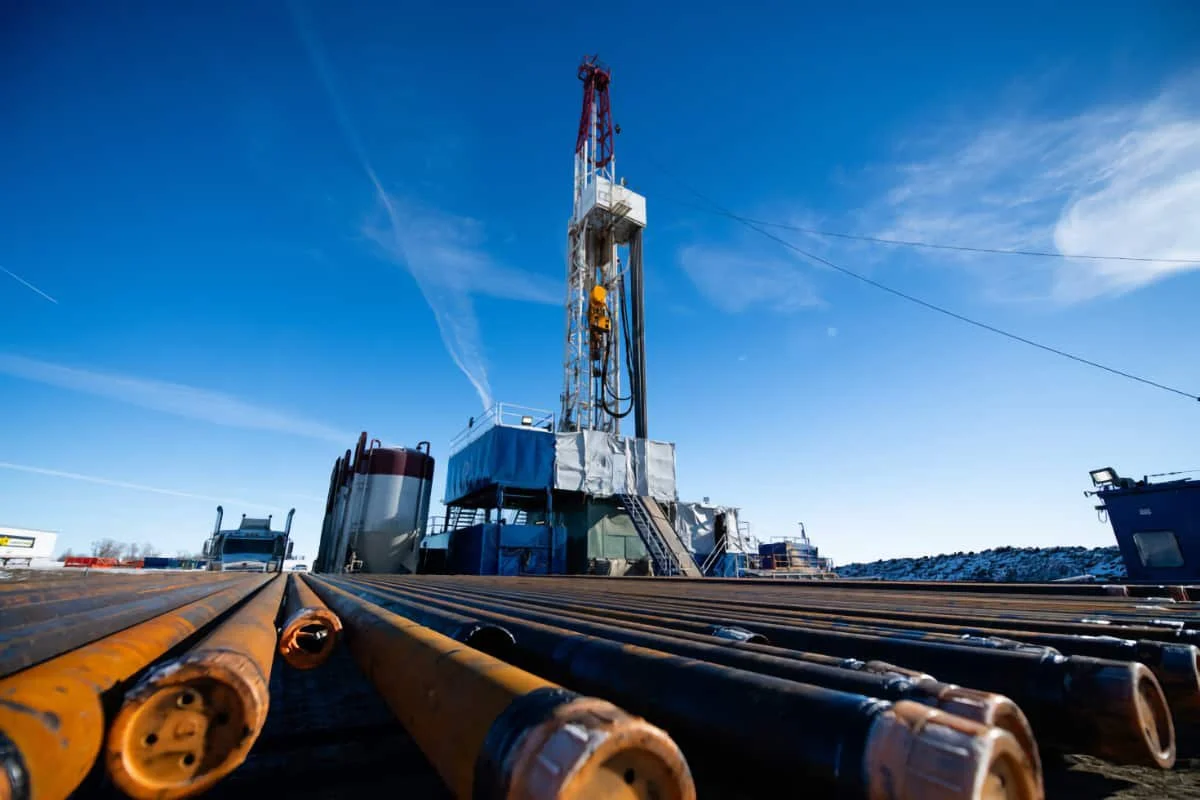Did you know oil and gas is Saskatchewan’s largest industry, as measured by GDP?
By Brian Zinchuk
You’d be forgiven if you thought agriculture was Saskatchewan’s largest industry. By many measures – people and communities impacted, land area affected, and culturally, it certainly is. But not by all measures, apparently. When it comes to GDP – gross domestic product – the measure used to measure economies, oil and gas supersedes mighty ag.
It turns out oil and gas is Saskatchewan’s largest industry by GDP. This is Stampede Drilling Rig 22, near Lampman, on Jan. 27. Photo by Brian Zinchuk
In a recent letter from Saskatchewan Minister of Energy and Resources Jim Reiter to federal Minister of Environment and Climate Change Steven Guilbeault opposing the latter’s most recent climate change initiatives – an emissions cap on oil and gas, this nugget stood out:
“Saskatchewan’s oil and gas industry is the province’s largest industry and a major contributor to the provincial economy and to the quality of life enjoyed by the citizens of this province. Each year, Saskatchewan’s oil and gas sector invests significant capital to maintain and grow production and to reduce emissions. In 2022 capital investment totaled $2.8B. This investment supports roughly 30,000 direct and indirect jobs connected to Saskatchewan’s upstream oil and gas industry.”
Pipeline Online asked the ministry for clarification on that, and received this response by email from the Ministry of Energy and Resources on Feb. 26:
“The emissions cap included a GDP of 15 per cent for the oil and gas sector, a number we had been using in recent years and that is based on StatsCan data but based on a 2012 baseline (chained dollars).
“In November 2023, Statistics Canada changed to reporting GDP in chained (2017) dollars. Using the chained (2017) dollars data, the oil/gas/mining industry accounted for 16.5 per cent of Saskatchewan’s total GDP in 2021, which is very similar to the 16.1 per cent in 2022.
Removing the mining sector, the GDP for Oil and Gas Extraction and related Support Activities calculates to 9.3 per cent in 2022, while the GDP for Crop and Animal Production and related Support Activities is 8.8 per cent.
Click for larger images
Oil and Gas Activity and Agriculture produce relatively similar levels of GDP, with each sector’s GDP being sensitive to production levels and commodity prices in a given year.”
The fact that agriculture is the focus of almost every small town in southern Saskatchewan, while oil and gas is isolated to a few dozen communities in southeast, southwest, west central and northwest Saskatchewan, means that oil and gas punches substantially over its weight, as it were.
The significance becomes apparent in the province’s stated goal of increasing oil production by roughly a third, from the current 454,000 barrels per day to 600,000 barrels per day. The provincial government is concerned that the federal government’s proposed Methane 75 program, calling for a reduction of methane emissions by 75 per cent by 2030, and a emissions cap on oil and gas production, could result in a 20 to 30 per cent reduction of oil production – roughly 100,000 to 150,000 barrels per day. So instead of an increase by a third, if the federal government’s wishes are fulfilled, Saskatchewan would see a one-third reduction, in its most significant industry.




